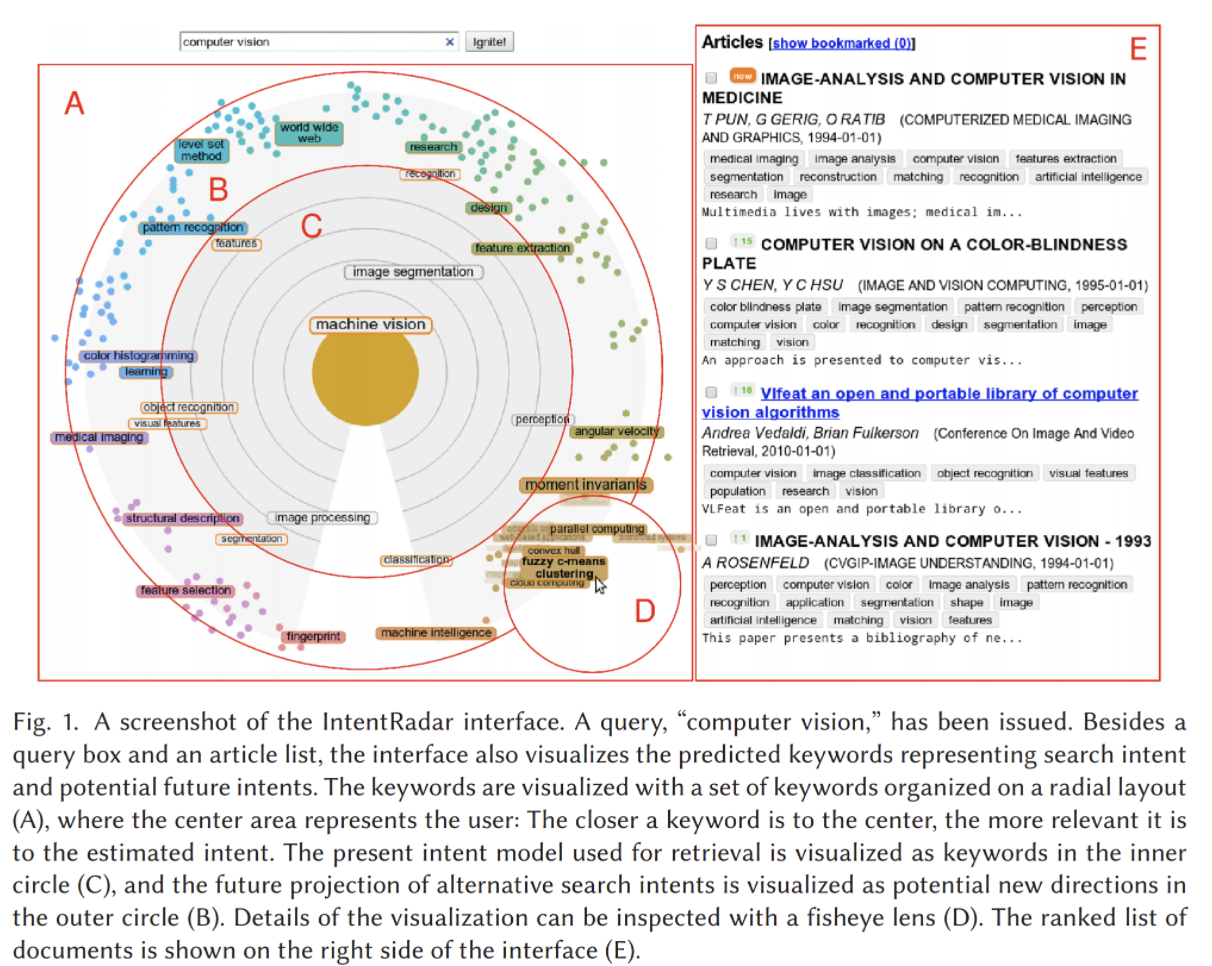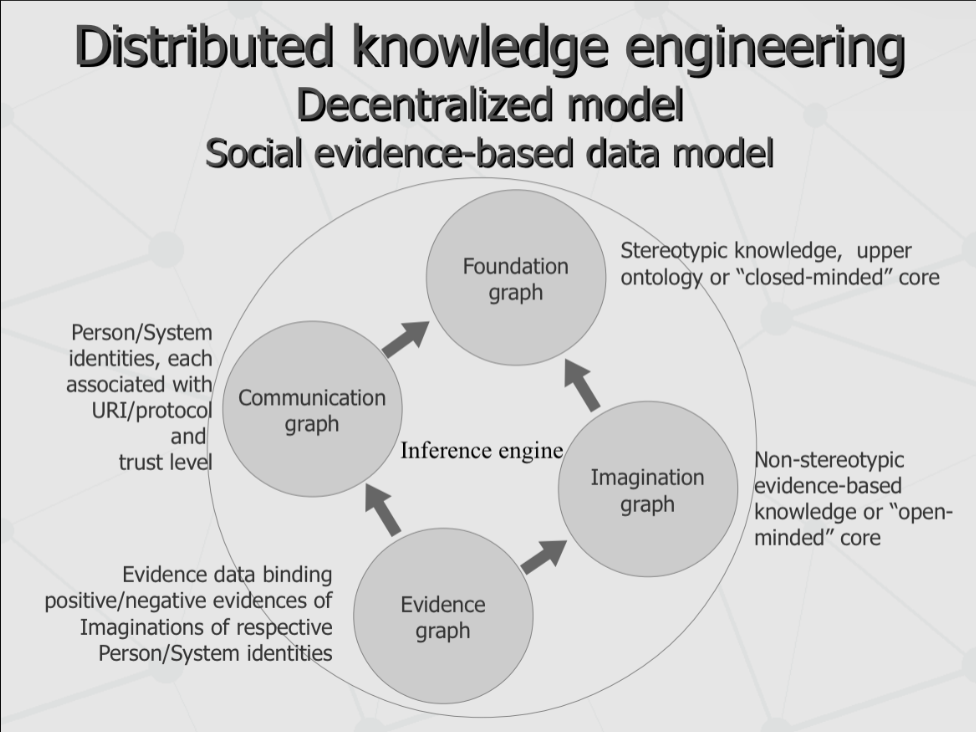An ideal decentralized knowledge graph would map a social graph and a knowledge graph
Authored By:: Rob Haisfield
A semantic knowledge graph may not be enough - as discussed in What are the most efficient routes to useful cross-boundary knowledge, it is difficult to imagine a more efficient search for information than asking the right people what they think. However, Synthesis is hard to do with people who don’t share context with you, and we need mechanisms to bring people up to speed. When someone begins to research a new domain, one of the most difficult problems is learning what vocabulary to use to search.
In Interactive Intent Modeling for Exploratory Search, they describe a search process where users type in a search term, are shown the results, and then are also shown other keywords they could add to the search, grouped by semantics and frequent use by experts. This is a low-touch social interaction - the experts don’t need to do anything but publish for the system to derive keywords and groupings from their work.

A high touch social interaction would involve a search for experts in your domain of interest and then direct communication. As described in Graphs in OpenCog’s AtomSpace, Webstructor and Aigents for SingularityNET, there should be a communication layer. Given how Hypertext enables communication with high information density, using a semantic knowledge graph in conjunction with a social graph would enable people to communicate more clearly.

- Can the blockchain be used to improve citation chains: this question is relevant insofar as a big reason why people are willing to share knowledge with others publicly is that they have an expectation of credit coming back to them.